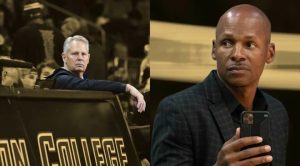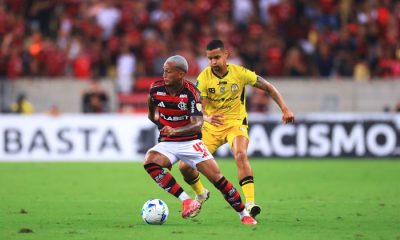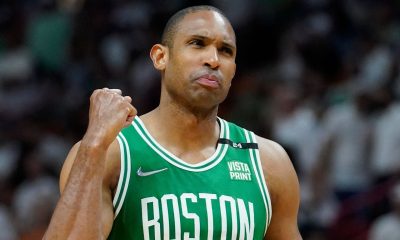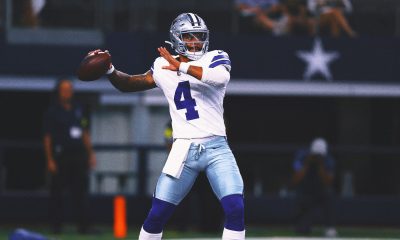Basketball
“The Ray Effect”: Danny Ainge Reflects on How Allen’s Shooting Changed the Celtics

“The Ray Effect”: Danny Ainge Reflects on How Allen’s Shooting Changed the Celtics

When basketball historians look back at the Boston Celtics’ championship run in 2008, the spotlight often shines brightest on the “Big Three” of Kevin Garnett, Paul Pierce, and Ray Allen. Yet, among the trio, it was Allen’s signature shooting stroke that fundamentally altered the geometry of the floor. Former Celtics president of basketball operations Danny Ainge recently revisited Allen’s impact, praising his unparalleled ability to bend defenses and uplift teammates.
“He was one of those guys who could knock down five, six, seven 3-pointers in a row,” Ainge said in a reflective interview. “Ray’s mere presence on the court made everyone else better.”

A Shooter Unlike Any Other
Before the modern NBA embraced spacing, pace, and the three-point revolution, Allen was a pioneer. By the time he joined the Celtics in 2007, the league had not yet fully realized how a consistent long-range threat could dictate defensive schemes. Ainge recalled that Allen’s shooting wasn’t just about the points he put on the board—it was about the fear he instilled.
“Teams had to chase him constantly, fight over screens, and that created openings for everyone else,” Ainge explained. “Paul had more room to operate in isolation, Kevin had cleaner looks in the post, and even Rajon Rondo, who wasn’t a shooter, thrived because the floor was so much more open.”
Allen’s shooting was never streaky in the sense of inconsistency—it was devastating because once he found rhythm, it often felt like a flood that opponents couldn’t stop. Fans can recall stretches when Allen would torch defenses with three after three, the Garden roaring with every shot that barely touched the rim.
The Championship Blueprint
When Ainge orchestrated the trades to bring both Allen and Garnett to Boston in the summer of 2007, critics wondered if the team could balance so many star personalities. But Ainge believed the mix was perfect—and Allen’s unselfishness played a major role.
“Ray wasn’t just a shooter,” Ainge said. “He was a pro in every sense. His preparation, his work ethic, his ability to accept different roles—that’s what made him invaluable. He was okay being the second or third option some nights because he knew his gravity still shaped the game.”
That balance was on full display during the 2008 playoffs, culminating in Boston’s 17th championship banner. Allen’s shooting repeatedly swung series. His record-setting performance in the NBA Finals, where he hit seven threes in Game 6 against the Lakers, remains a defining moment of that run.

Beyond the Numbers
Allen’s Celtics tenure was sometimes overshadowed by drama—particularly his eventual departure to the Miami Heat in 2012, which fractured relationships with former teammates. But Ainge emphasized that none of the off-court tension diminished what Allen contributed to Boston’s golden era.
“People remember the way he left, but I remember what he gave us,” Ainge said firmly. “His professionalism, his leadership, his conditioning—those things left a mark on our younger players. He raised the standard.”
Indeed, young Celtics at the time often pointed to Allen’s legendary workout routines. His pregame shooting drills, performed hours before tip-off, became a ritual that teammates and even opponents admired. That commitment rubbed off on a generation of players who witnessed firsthand what it meant to prepare like a Hall of Famer.
The Legacy of the “Ray Effect”
In many ways, Ainge argues, Allen foreshadowed the direction of the modern NBA. “Look at how the game is played now—spacing, threes, constant movement. Ray was ahead of his time,” Ainge reflected. “If he played in today’s league, he’d probably be taking 12, 13 threes a night.”
Current sharpshooters like Stephen Curry, Klay Thompson, and Damian Lillard are often cited as revolutionaries of the three-point era, but Ainge insists Allen’s influence paved the way. “He was the prototype,” Ainge said. “And the impact he had wasn’t just in Boston. Wherever he played—Milwaukee, Seattle, Miami—he elevated everyone around him.”

A Lasting Impression
As Celtics fans reminisce about that championship core, Allen’s role remains both celebrated and complicated. Yet in Ainge’s mind, the bottom line is clear: Allen’s presence reshaped the team.
“When you have a guy who can change the game with a single shot, it forces defenses into impossible decisions,” Ainge said. “Ray did that every night. He didn’t just make shots—he made us champions.”
For Celtics supporters, those green and white memories of Allen raining down threes will never fade. And for Ainge, the respect for Allen’s unique gift as one of basketball’s greatest shooters will always remain.
-

 Liverpool News5 months ago
Liverpool News5 months ago“He Spoke To Me”: Trent Alexander-Arnold breaks Silence on Real Madrid Snub and Finally Reveal The Reason Why He’s Staying at Liverpool After an Advice From….
-

 Liverpool News6 months ago
Liverpool News6 months ago5 Minutes AGO: A Poor Newborn Baby Was Abandoned in a Park Near His Home After The Leicester City Game, in Response To This Heartbreaking Situation, Star Trent Alexander Arnold Stepped In to Become The Child’s Guardian, Pledging To Pay All Living Expenses Until The Child Turns 18….
-

 Liverpool News6 months ago
Liverpool News6 months agoBREAKING NEWS: live from Fabrizio romano, “LET ME GO” Liverpool target set to hand in transfer request to join Liverpool with immediate effect. He said, “I’ve made it clear to the club—I want to leave. The moment I heard Liverpool were interested, my mind was made up. This is a club you don’t say NO to, and I won’t risk waiting around. This is my career, my future, and I’m taking control of it. I’m handing in a transfer request because I want to wear that red shirt. Let me go—this isn’t a request, it’s a warning. My decision is final. It’s Liverpool or nothing.” Yes this is the kind of players we want who want to play for the club and not for the money get him for us immediately the fans are celebrating….
-

 Liverpool News6 months ago
Liverpool News6 months ago“He visited my office yesterday to inform me about his decision to return to the Anfield this summer. I am not only disappointed in him, but I will also report Liverpool to FIFA for attempting to deceive us.” His return to Liverpool by the summer has been confirmed, but a major issue remains unresolved. HAVING NETTED 15 GOALS IN 6 MATCHES THE MONACO COACH IS DISAPPOINTED IN HIM RETURNING TO LIVERPOOL…..
-

 Featured3 months ago
Featured3 months ago🚨𝐄𝐒𝐂𝐋𝐔𝐒𝐈𝐕𝐀: ARDON JASHARI SARÀ UN NUOVO GIOCATORE DEL MILAN! 🚨 ✅ Accordo totale tra Club Brugge e AC Milan per Ardon Jashari! 🔴⚫️ Il trasferimento si chiuderà su una cifra tra i 37 e i 40 milioni di euro, inclusi bonus, oltre a una percentuale sulla futura rivendita. 💼 Contratto fino almeno al 2030, con stipendio stimato tra 2 e 3,5 milioni a stagione 📝 🔥 Ardon Jashari sarà rossonero. Un colpo chiave per il centrocampo del Milan ✅🔴⚫️
-

 Liverpool News6 months ago
Liverpool News6 months agoIT’S FINALLY OFFICIAL:Trent Alexander-Arnold signs a new long-term contract with Liverpool Amid Motivational Goal Scored Against Leicester City, keeping him at the club until 2028….
-

 Featured3 months ago
Featured3 months ago🚨 ULTIM’ORA: CAOS IN SERIE A – La Roma starebbe elaborando un piano terrificante e minaccioso per strappare il difensore brasiliano alla Juventus, ma Tudor ha lanciato un avvertimento chiaro e diretto al club giallorosso, secondo quanto riportano alcune fonti…
-

 Liverpool News6 months ago
Liverpool News6 months agoBREAKING NEWS: Arne Slot Makes Surprise Statement On Trent Alexander-Arnold’s Remaining Games for Liverpool After What Transpired On…








